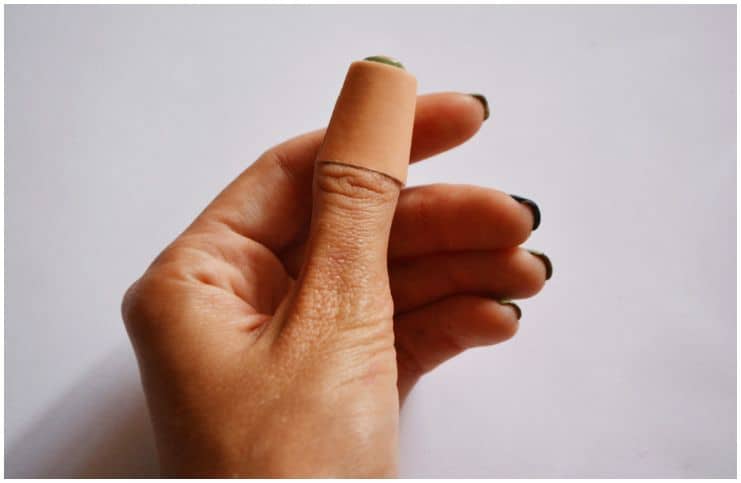Bacitracin
It was first isolated in 1945 and is a mixture of related cyclic peptides made by organisms of the licheniformis group.
This medicine is used to help prevent minor skin injuries, like – scrapes, cuts, and burns from becoming infected. This antibiotic will not work for fungus or virus infections. However, this ointment only prevents bacterial infections.
Dosage
You may apply this antibiotic to the affected area up to 3 times a day. Before application, it is recommended that the wound should be completely washed and dried. Use this medicine only enough to cover the area you are treating. Then rub the drug into the affected area until the application is uniform.
Side Effects & Precautions
Many individuals using this ointment do not experience any side effects. However, some do, and they may include:
- difficulty passing urine;
- lower back pain;
- chest tightness;
- breathing problems;
- allergic reactions, such as – hives, skin rash, swelling of the tongue, face, or lips.
Eating this antibiotic either unintentionally or intentionally may lead to nausea, abdominal or stomach pain, vomiting, irritation of the mouth, eyes, nose, throat, and skin, diarrhea, chills, coughing, shortness of breath, and fever.
Do not use this ointment topically to treat puncture wounds, animal bites, severe burns, or deep skin wounds. Also, do not use this antibiotic or similar antibacterial creams on impetigo (one of the most common skin infections in kids). They are less effective than mupirocin (usually sold under the brand name Bactroban) and may cause unneeded contact dermatitis (a severe reaction that can occur when the skin comes in contact with specific substances).
Neosporin
It is an antibiotic cream that contains polymyxin B (derived from the bacterium Bacillus polymyxa), neomycin (an aminoglycoside antibiotic), and bacitracin.
This ointment is available without a prescription for self-medication. It works by inhibiting the growth of harmful bacteria and provides temporary relief from itching linked with minor skin inflammation, irritations, and rashes as well as reducing the risk of mediastinitis (inflammation of the tissues in the mid-chest) after cardiac surgery.
It is also used to treat and prevent minor skin infections caused by scrapes, small cuts, or burns. Additionally, this antibiotic is used for bacterial skin infections and allergic conjunctivitis.
Dosage
Clean and dry the affected area and massage this antibiotic. It can be applied as directed on the medicine label or 1 to 3 times per day. Wash your hands after using, unless hands are in the affected area.
Do not use large amounts of this ointment or more than 3 times each day because your condition will not heal faster, but the chance of side effects may be increased considerably.
Side Effects
Most people don’t have any side effects after using it, however, some report allergic reactions, such as:
- trouble breathing;
- severe dizziness;
- swelling of the tongue, face, throat, eye, or eyelid;
- itching;
- rash.
It may not be safe to use for pregnant or breastfeeding women since there are no clinical studies.
Bacitracin vs Neosporin – Which Is More Effective?
Both these products are safe antibiotics mostly used for minor skin wounds since they can stop bacterial growth. However, Neosporin can also kill the existing bacteria, but numerous users are allergic to this ointment.
More importantly, according to a study issued in Emerging Infectious Diseases, this type of antibacterial ointment may be one of the main reasons behind the widespread of MRSA (methicillin-resistant Staphylococcus aureus).
MRSA can cause many health problems ranging from bloodstream infections to skin infections. Infection with methicillin-resistant Staphylococcus aureus is frequent among individuals who have a weak immune system.
5 Natural Home Remedies For Wounds
The best treatment for minor scrapes and cuts is simple cleaning and bandaging. You may also use these natural remedies:
#1 Aloe Vera
The plant contains many beneficial properties that help the human body heal wounds faster as well as combats scalp conditions. For painful abrasions and scrapes, you may gently slide a split leaf of aloe vera over the area a few times per day.
#2 Lavender Oil
This essential oil has skin cell rejuvenating properties and is best known for its calming effects. Lavender oil can be applied to the scar three times each day.
#3 Coconut Oil
It can effectively heal wounds because of its fantastic anti-inflammatory, antibacterial, healing, and moisturizing properties. In addition, coconut oil promotes collagen production, meaning that rashes and cuts will heal faster.
#4 Garlic
It is a potent anti-fungal and anti-bacterial, and can also help improve almost any wound mostly due to its content of allicin, which has been shown in many studies to be as effective as a 1 percent penicillin solution.
#5 Vitamin C
Vitamin C is essential for manufacturing collagen, the most predominant protein in the human body which is an important component of tissues and skin. Therefore, to help your body heal wounds faster, consume foods rich in vitamin C, like – oranges, clementines, pomelo, mango, lemons, limes, bell peppers, blueberries, blackberries, strawberries, papayas, pineapples, tamarinds, or tomatoes.
Images credit – Shutterstock
READ THIS NEXT: Interesting Facts About Scarlet Fever

What about honey as a topical treatment to prevent infection?